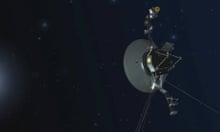Saturn has regained its crown as the planet with the most moons in the solar system, just months after being overtaken by its fellow gas giant Jupiter.
The leap-frog comes after the discovery of 62 new moons of Saturn, bringing its official total to 145. Jupiter, which added 12 moons to its tally in February, has 95 moons that have been formally designated by the International Astronomical Union (IAU).
“Saturn not only has nearly doubled its number of moons, it now has more moons than all the rest of the planets in the solar system combined,” said Prof Brett Gladman, an astronomer at the University of British Columbia who was involved in the observations.
The new moons, which have been assigned strings of numbers and letters for now, will eventually be given names based on Gallic, Norse and Canadian Inuit gods, in keeping with convention for Saturn’s moons. Gladman said his team would be consulting with Inuit elders to ask for proposals that could be put to the IAU for approval.
Many of the new objects are likely to be remnants of a relatively recent moon-moon collision that resulted in a larger moon fracturing and “spreading its children” in orbit about the planet.
While it is possible that Jupiter may, in future, temporarily inch ahead, the latest findings appear to cement the case that, ultimately, Saturn has more moons. Since Jupiter is closer, astronomers can spot much smaller moons.
“At a fixed size there are three times more Saturn satellites than Jupiter satellites,” said Gladman. “They’re not all known yet, but we already know the final answer.”
In recent decades, the number of confirmed moons has steadily increased as telescopes and analysis methods have stepped up in sensitivity. The latest study used a technique called “shift and stack” to discover fainter, and smaller, satellites. It involves shifting sequential images at the rate that the moon is moving across the sky, making the moon appear brighter when all the data is combined.
Dr Edward Ashton, who led the project at the University of British Columbia and now works at Taiwan’s Academia Sinica Institute of Astronomy and Astrophysics, compared the challenge of connecting the various appearances of the moons in the data to a child’s dot-to-dot drawing. “But with about 100 different games on the same page and you don’t know which dot belongs to which puzzle,” he said.
The team used data taken using the Canada-France-Hawaii Telescope on top of Mauna Kea, Hawaii between 2019 and 2021, to detect moons down to a diameter of 2.5km.
It is hoped that Nasa’s Dragonfly mission, due to launch in 2027, will be able to make closer observations of at least one of Saturn’s small outer moons.
Separately, scientists have published findings suggesting that the rings of Saturn were acquired relatively recently in the history of the solar system. Experts working on data collected by Nasa’s Cassini spacecraft said the latest observations suggest that the massive rings did not form at the same time as the planet, but formed no more than 400m years ago.
“It is natural to think that the rings have been formed together with Saturn [which is] about 4.5bn years old,” said Dr Sascha Kempf, a co-author of the research at the University of Colorado Boulder.
But it seems that Saturn’s rings are not here to stay: research has previously revealed they are disintegrating.
“The rings are not for eternity and we are probably lucky that we can observe them now,” Kempf said.









